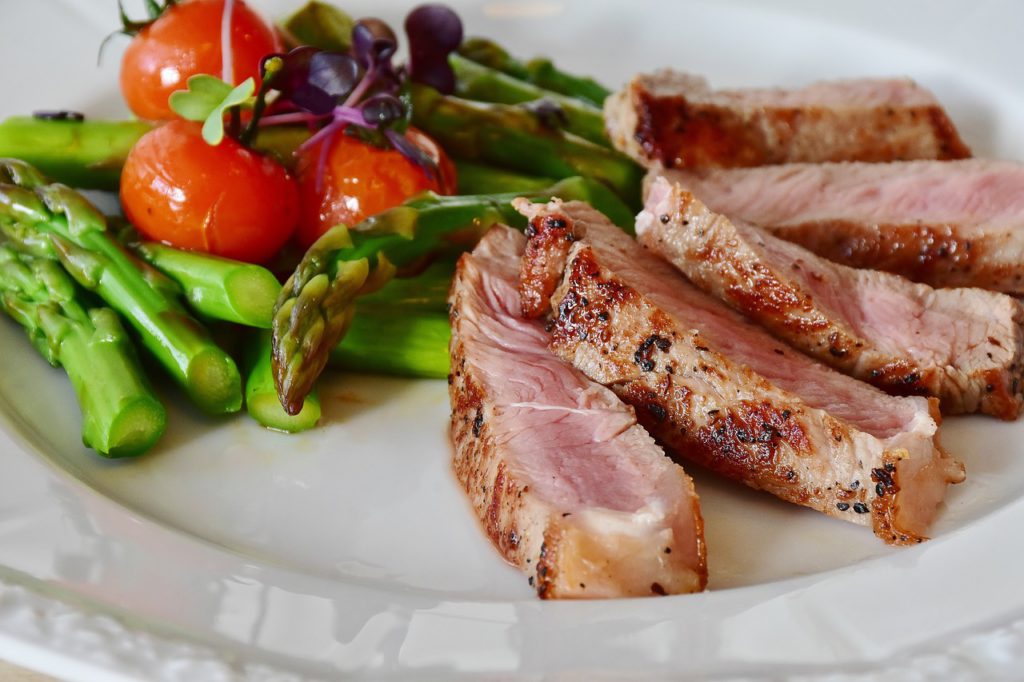How does adding a new schedule to when you eat or what you eat alter the way you look and feel?
It’s a brand new year. Time to start working on a brand new you. Are you still searching on the Internet for an effective way to shed the pounds gained over the holidays? Want a plan that is easy to implement while keeping you full throughout the day?
Look to Intermittent Fasting and watch the extra weight fall off with little effort. In the last few years, it’s gained popularity with many celebrities as well as YouTube influencers hailing it as a successful method for re-shaping the body and controlling their appetites.
The concept of abstaining from eating for long periods is not new. Seen as a cleansing of the soul, many cultures practice fasting as part of rituals and in celebrations of special holidays. However, adding it to a daily schedule is much different.
I urge you to continue reading to discover how this 1 small change in your eating habits can revolutionize the way you think and feel about food.
There are different variations of this method. All of which can produce amazing results. But, if you never tried fasting before and are unsure of which method would be right for you, let’s start with some basic information that can help you decide.
What is Intermittent Fasting?
Intermittent Fasting is the process in which you have a set period during the day that you consume foods and an even longer period that you go without eating.
Benefits of Fasting

There is a multitude of benefits to fasting whether you are doing it daily or on alternating days during the week.
Here are some benefits to fasting:
- Weight loss
- Decrease bell fat
- Boost brain function
- Better sleep
- Fights Inflammation
- Improved longevity
Methods of Intermittent Fasting
- 16/8 Method: daily fasting for 16 hours; eating during the remaining 8-hour window
- 24 Hour Method: fasting for 24 hours; eat normally for the next 24 hours
- 5:2 Method: regular meals for 5 days; fasting 2 alternate days per week
- Alternate Day Method: Fasting 1 day; eating meals the next day
- The Warrior Diet Method: Fasting all day; eating a substantial meal in the evening or night
Depending on other factors such as work, school, family comments, e.t.c., the times in which you begin and end your fast will vary. The most popular is the 16/8 method as most people find it easiest to implement. See below how you can start incorporating this method into your schedule today.
Why is the 16/8 Method so Popular?
The 16/8 method is very popular because most of us are already participating in a variation of this type of fasting every day! If you get anywhere from 8-10 hours of sleep each night, you’re not eating during those 8-10 hours. Adding another 6 hours is a lot easier than say going a whole 24 hours without food as a beginner. Therefore, within 24 hours, 16 hours are spent fasting thereby consuming foods during the remaining 8 hours.
For example, if you normally go to bed at 11:00 pm and have breakfast at 7:00 am, that’s 8 hours of fasting! Now, to extend the fast an additional 8 hours will take a bit for ingenuity. It requires moving forward the time in which you have your 1st meal of the day.
The simplest way to get in more hours on the 16/8 method would be to stop eating after dinner and skip breakfast.
How to Fast for 16 Hours
To fast for 16 hours, follow this schedule:
1st meal: 12:00 pm
2nd meal: 3:00 pm
Last meal: anytime after 7:00 pm but no later than 8:00 pm
What Foods can I have during Fasting?

During the fasting period you are limited to the following foods:
- Coffee & tea, black – no sugar
- Water
- Apple Cider Vinegar
- Clear broths
What Foods can I have when I am Not Fasting

Foods that contain a lot of fiber, vitamins, and minerals work best for these fasting protocols. Fruits and vegetables, protein, dairy are excellent examples. Carbohydrates are also a good option but portion control is the key to them being beneficial.
Once the body processes the carb, they turn into glucose. Too much glucose can have an adverse effect and derail some of the benefits of this process altogether. It’s extremely important to stay hydrated at all times. Fluids help to flush toxins from the body while drinking adequate amounts of water maintains healthy-looking skin.
Try to avoid a lot of sugary and highly processed foods. This would include commercially made foods like hamburgers, onion rings, chicken nuggets, milkshakes, and carbonated drinks like pop and ice teas are off the menu or at the very least eaten once in a while. Remember, you are not trying to replenish the fat loss by adding bad fats and poor nutrition.
The goal is to allow your body to fully extract and absorb the nutrients from better food choices. So, the next time you’re at a fast-food restaurant craving a combo meal, instead of having a side order of french fries, try a large salad. But go easy on the salads dressings.
When can I start Intermittent Fasting?
You can start right now. Don’t wait for a special occasion. All it takes is to decide which fast fits into your daily schedule. You need no equipment other than jotting down the start time. From there, decide when you will eat, noting the hours or days on the fast. Stock up on foods that will promote better nutrition.
At first, starting a fast might seem scary. Here are some frequently asked questions:
Question #1: What happens when I fast for 16 hours
Answer: There is research that suggests a fast lasting for 10-16 hours can help the body convert stored fat into energy. The body then produces ketones which can promote weight loss.
Question #2: What are the side effects of Intermittent Fasting?
Answer: Some side effects of intermittent fasting include dizziness, low blood sugar, headaches, fatigue, and weakness.
Question #3: Will I feel hungry before my eating window begins?
Answer: Yes, it is possible to feel hungry before your eating window. The body is still in the early stages of adaptation to this new way of eating. It may take some practice before you are ready to complete a whole cycle. Give yourself a few days to adjust to your chosen method and drink plenty of liquids.
Question #4: Can I break my fast?
Answer: Absolutely. If at any time you have feelings of dizziness, headaches, or tiredness go ahead and stop fasting. Again, most of these side effects happen to beginners. They subside as you continue. Trying a different method could resolve the issues. It might be that you are trying to move too fast, too quickly. Start by going a couple of hours without eating and build up momentum. However, if the problems continue, see a healthcare professional. There might be an underlying explanation as to why you are having adverse effects under these modified eating habits.
The Bottom Line
Intermittent Fasting is an Effective Method to Improve Your Health.
Not only that, but you can achieve a great deal of other health-related benefits. It’s no wonder fasting has caught on in popularity. Coupled with a healthy diet of foods rich in vitamins and minerals, these methods can decrease other risk factors related to heart health. It’s easy to incorporate into any eating plan. You can start as soon as your next meal with no special training needed.
Having an eating schedule means spending more time doing the things you love rather than worry over your next meal. Focus on life, not on food. Distributing portions evenly throughout your eating window helps to minimize fluctuations in blood sugar levels. It’s perfect for busy people who are on the go and prefer eating smaller meals.
However, if you have a chronic condition, intermittent fasting may not be right for you. It is wise to consult with a healthcare professional before starting a new regime.
Please note: As an Amazon Associate, and of other affiliate programs, I earn from qualifying purchases. Which are at no cost to you. For more details, read the Disclosure
Need more information in print format, check out Amazon’s bookstore.
If you have any concerns or would like to share your experiences with any of the above fasting methods, please leave your comments below.
To Your Health,
welowcarbliving.com
Enjoyed this blog post? Share with friends on social media





